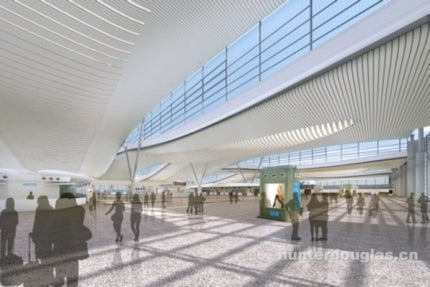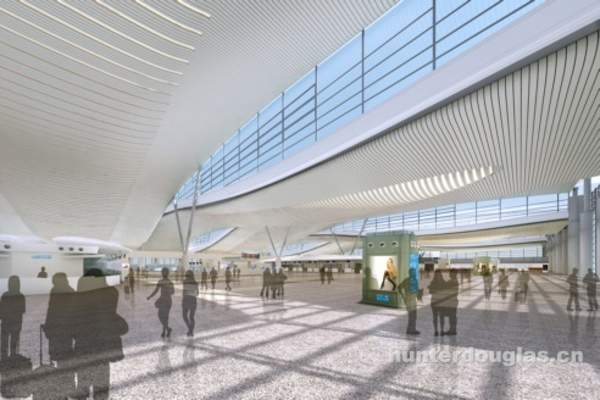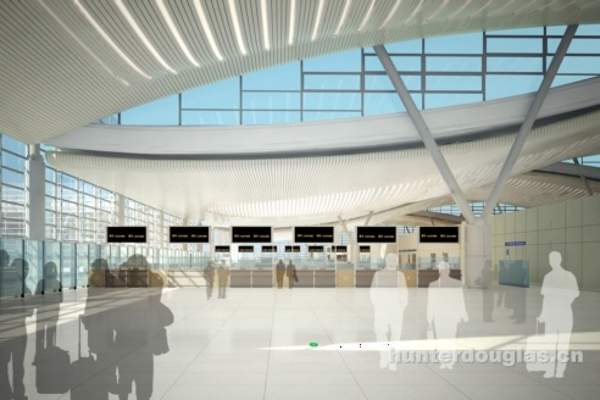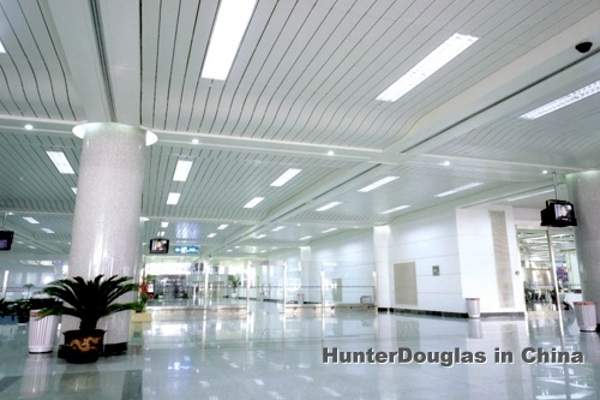
Hangzhou Xiaoshan International Airport (IATA code: HGH) is the tenth busiest airport in China when it comes to traffic. The airport is located 27km away from Hangzhou, the capital of Zhejiang Province, China.
Hangzhou Jianqiao Airport was replaced with Hangzhou Xiaoshan International Airport (HXIA), which was initially used for civil and military services. The construction of Hangzhou Xiaoshan airport started in July 1997 and was completed in 2000. It became an international airport in March 2004, with the construction of immigration and customs facilities.
The airport has been functioning with an average annual capacity of eight million travellers and 110,000t of freight since December 2000. The airport handled 17.06 million passengers in 2010. It is expected to handle 25.6 million passengers, 0.5 million tonnes of cargo and 260,000 aircraft movements by 2015.
Hong Kong International Airport has an equity share of 35% in Hangzhou Xiaoshan International Airport.
The airport is home to 38 airline companies providing flights to 58 cities in mainland China, and the Hong Kong and Macao regions, as well as East Asia and Southeast Asia, including eight international and regional cities.
Hangzhou Xiaoshan International Airport expansion
A $1.4bn expansion of the airport was completed in December 2012. The project was executed in two stages.
Stage one included the construction of a 96,000m² (1.03 million ft)² international terminal. The terminal construction was finished in 2010.
The second stage of the expansion started in November 2007 and was completed in December 2012. It included the construction of a 196,000m² (2.1 million ft²) domestic terminal and a new runway.
The expansion also involved the construction of a 567,000m² (6.1 million ft²) apron and 67 new parking bays.
Hangzhou Xiaoshan International International Airport terminals
The airport currently has one international terminal and two domestic terminals. The old international terminal is being used as a domestic terminal now. The total terminal area is 292,000m² (3.14 million ft²).
Facilities at Hangzhou Xiaoshan International Airport
The airport is equipped with large screens to display the flight information and 12 electric systems. The waiting area has 2,900 seats for passengers and waiting rooms for VIPs.
The airport also has 16 escalators and nine elevators. The aircraft fuel depot can store 20,000m³ of fuel.
The airport has a 680,000m² (7.3 million ft)² passenger aircraft apron with 58 parking bays, and a 52,000m² (559,723ft²) cargo apron with six parking bays. There are 12 passenger boarding bridges, 46 remote stands, and double-loop fuel pipelines. The airport has a 7,216m² (77,672ft²) cargo facility with ten passageways.
Related project
Beijing Daxing International Airport, China
Beijing, the capital city of the Republic of China, is one of the most important and largest cities in the world. It has only one international airport and a military air base, whereas other esteemed cities of the world of the same level have more than two international airports.
The luggage checking system is equipped with some of the world’s most advanced sorting and conveying equipment.
The commercial space at the second domestic terminal has banks, foreign currency exchange services, internet cafes and business centres.
The airport also has an international joint inspection office to provide services such as border inspection, customs clearance, quarantine check and foreign currency exchange.
Runways at Hangzhou Xiaoshan international airport
The airport has a 3,600m-long and 45m-wide runway that can accommodate large aircraft. A new 3,400m-long and 60m-wide runway was constructed as part of the expansion, in order to accommodate aircraft such as A380.
Ground transportation and parking facility at HXIA
The airport has a taxi stand, car rental services and bus terminals. The parking lots P1 and P2 located in front of the terminal offer 1,300 spaces. Other parking areas include P3, P4, and underground parking, which together offer 2,500 lots.
Hangzhou Xiaoshan airport expansion contractors
Aedas Architecture provided interior design to the airport expansion. Pteris Global received a $5m contract from Hangzhou Xiaoshan International Airport in September 2011 to supply and install baggage handling systems.
Hunter Douglas Architecture supplied its Luxalon products, which included 180 perforated sound-absorbing panels and custom-built screens for the ceiling of the new terminal building. The contract was awarded in November 2009.
Future plans for the HXIA
The airport will have a FedEx courier centre. The centre will include a 60,000m² (645,834ft²) sorting centre and an additional 26 apron slots. It will also have auxiliary facilities covering 148.26 acres of land.
The airport authorities are also planning to increase the length of the runways and expand the terminals with additional facilities. The plan for construction of two new runways is also underway. The new runways will accommodate all types of aircraft. The total terminal area is expected to be increased by 570,000m² (6.13 million ft²) and the cargo warehouse area by 380,000m² (4.09 million ft²).




